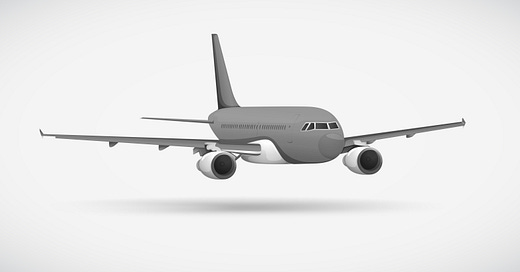Boeing is Threatened by Greed and Ignorance
Will Boeing be able to recover when it goes down? Go down, it will
Boeing and Airbus have been in tuff competition for decades, with ups and downs for both companies. Boeing is right now trailing a lot in deliveries and orders for new passenger airliners, and the trend is downwards. At the same time, Airbus is peaking and even starting to signal that they may have to refuse orders because production capacity is exhausted for the near future.
Flying low, Boeing 737 (Freepix)
Number of gross orders for Airbus and Boeing aircraft:
It’s a duopoly producing very similar aircraft for the same markets, but what are the differences? Both are competing for the same market except for the government orders. Boeing got to a level of complacency and was subsequently hit hard with very serious accidents that costs hundreds of lives of passengers and crews in their new 737max model. There were also quality problems and accidents occurring with other types of their aircraft, leading to a realization there were certain problems with the quality procedures.
Meanwhile, Airbus managed to stand up to real competition because they felt like the underdog and in a way because they were still owned and led by air enthusiasts and specialists that wanted to make a mark on the history of passenger aircraft, first with the A300 twin-engine ETOPS extended range, second with the fly-by-wire for commercial passenger aircraft and a standardization of cockpits so that A380 are compatible with A320 and crew can relatively easily be retrained for a new model. Third with often leading by fuel economy, better notch by notch for each generation. Fourth by being able to deliver and scale production even if they have a patchwork of different factories and locations. Finally with having a consistently good safety record.
In comparison, Boeing had a constantly worsening failure and accident count, without realizing that it was going way to far. They started lying about it consistently and covering behind the government sponsors, which made consumers’ confidence flatten.
At some point in this process, Boeing was taken over by non-technical owners and leaders that shifted focus to profitability. That led to less focus on innovation and product development. Boeing forgot what it means to be the industry leader and just wanted to earn out the investments. Boeing invested in the 787 Dreamliner that was soon met with competition from the Airbus A350. They are very similar in performance, and Boeing had the edge over Airbus with sales, but only a small difference, commercially.
Large, long range aircraft are not the most profitable ones to produce, however. The much larger segment of mid-range, midsize aircraft is more profitable. Economically, Boeing lost its way because the board wrongly thought 737 was a cash cow that should bot carry major further investments. This while Airbus was able to incrementally develop with larger, more economical, engines without incurring basic engineering cost for the base structure, because A320 sits higher over the ground than 737. The 737 is a design from 1964 when jet engines were slim, and allows the aircraft to sit very close to the ground with easy access to the cargo stores without stairs or lifts. That was advantage at the time, but a big problem when larger engines needed to be fitted for improved fuel economy. It was a squeeze, especially since the ground gear could not be stretched higher, because it would not fold up into the limited room in the body of the aircraft. Keeping the old design from 1964 also means that the 737, including the max model, is the only of its kind in production that has old-fashioned cable-operated maneuvering surfaces, while competition and even other Boeing aircraft all have modern electronical fly-by-wire operation.
The board of directors was not heavy with engineers but they still decided that the 737 could indeed take one more incremental improvement and fit the new larger engines, which it clearly could not, and even the company’s own engineering staff said that this would be a step too far. That was a deadly mistake and it will continue to be a weight around the neck of Boeing until they are able to introduce a replacement aircraft for the ill-fated 737max. They have to buy one, but there are very few designs available except a Russian and a Chinese, both of questionable status, and perhaps something from Brazil. Or they have to invest billions in designing a new competitor to A320, which would be very interesting but also a risky business, hard to interest investors in when Boeing already is not doing well, financially.





